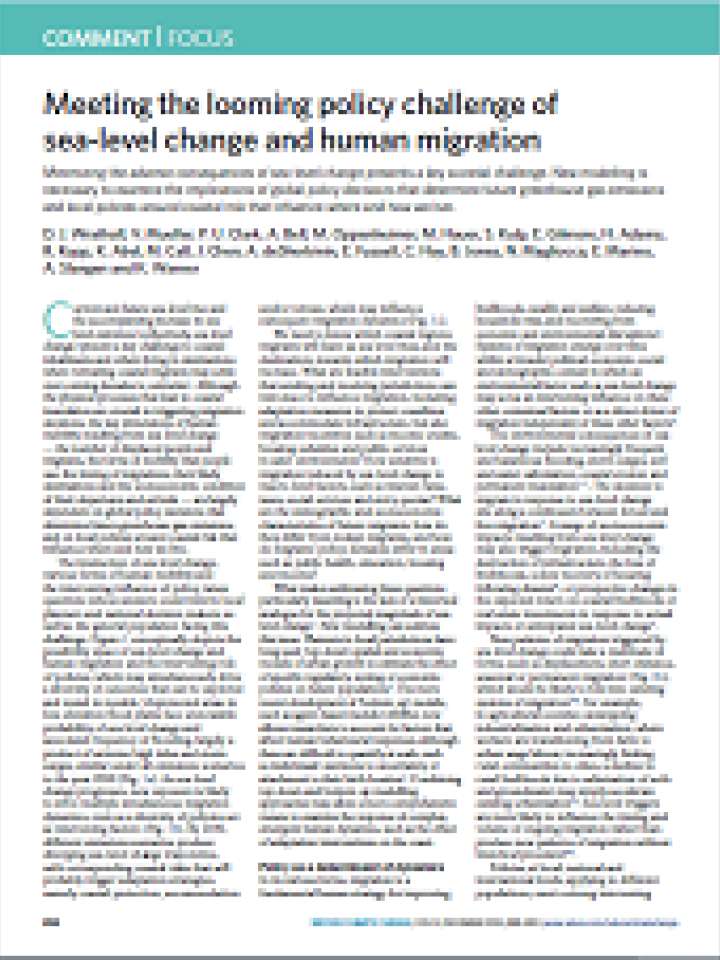Meeting the looming policy challenge of sea-level change and human migration
Minimizing the adverse consequences of sea-level change presents a key societal challenge. New modelling is necessary to examine the implications of global policy decisions that determine future greenhouse gas emissions and local policies around coastal risk that influence where and how we live.
Current and future sea-level rise and the accompanying increase in sea-level extremes (collectively, sea-level change) present a key challenge to coastal inhabitants and others living in destinations where retreating coastal migrants may settle over coming decades to centuries.
Although the physical processes that lead to coastal inundation are crucial in triggering migration decisions, the key dimensions of human mobility resulting from sea-level change — the number of displaced people and migrants, the forms of mobility that people use, the timing of migrations, their likely destinations and the socioeconomic condition of their departures and arrivals — are largely dependent on global policy decisions that determine future greenhouse gas emissions, and on local policies around coastal risk that influence where and how we live.
Explore further
